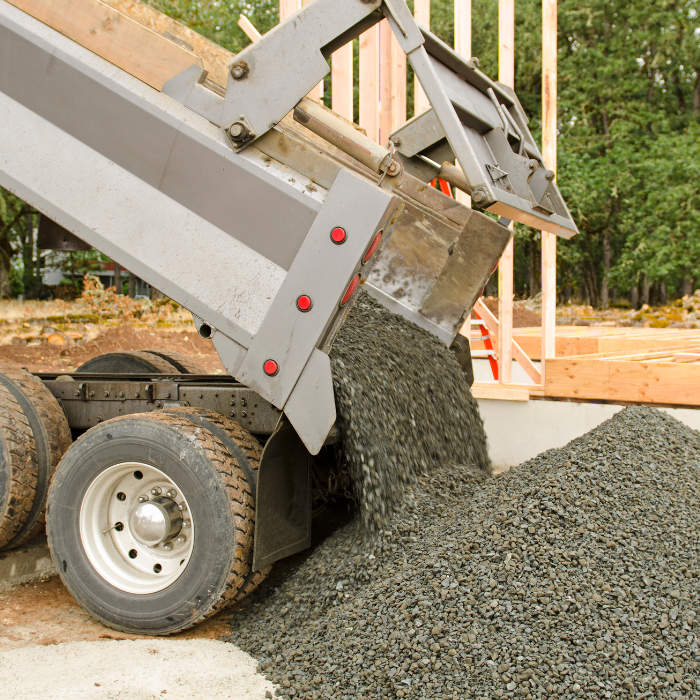
Behind every great construction project are teams of skilled workers from a wide range of specialties. Their collaboration is what makes each project successful, from highways to commercial buildings and everything between. This week, we’re launching a brand new series that gives you a behind-the-scenes look at the great work of our industry. We kick off our Behind the Build series with aggregates and industrial materials.
First, let’s clarify what exactly aggregates and industrial materials are.
Both are key elements that lay the foundation for a construction project. “Aggregates” can be defined as materials that come from sand, gravel, crushed stone or slag. These are most often used in road and street construction as well as asphalt paving. These are incredibly important materials. According to OAIMA, just one mile of a four-lane highway requires about 38,000 tons of aggregate materials. “Industrial Minerals” are materials that come from clays, shales, sand, salt and other non-fuel minerals.
As The Ohio Aggregates & Industrial Minerals Association (OAIMA) website says, “If it can’t be grown, it has to be mined!” And we Ohioans depend on these mined materials every day. According to OAIMA’s website, every Ohioan uses an average of 22,000 pounds of aggregates and industrial materials every year, which is mined right here in Ohio.
Ohio is home to about 450 aggregate companies, each filled with exciting positions. Potential careers in aggregates and industrial minerals include:
First, we need talented and trusted team members to bring materials to the job site. According to OAIMA, over 90% of all aggregates are moved by dump truck. Truck drivers transport an impressive amount of materials – more than three tons at once! But truck drivers in aggregates don’t drive long distances. In fact, nearly all aggregates used at an Ohio jobsite are within 50 miles of the production site. They take care of everything from loading to unloading as part of their daily work and stay in close contact with their destination supervisors along the way.
Once the materials are onsite, equipment operators help to move it to where it’s needed. Equipment operators work with powerful machines to safely and efficiently get the job done. Given the size and scope of their work, equipment operators must have great eyesight as well as excellent hand-eye and foot-eye coordination. And, they must stay constantly alert and observant of their surroundings to keep everyone safe on site.
Lastly, it’s up to cement masons to set the materials in place. Cement masons make sure the finished product – whether that be a roadway or building foundation – is smooth and level. Cement masons must be highly trained in concrete, both from how to work with it as well as how everyday elements might impact it.
These are just three career opportunities within aggregates and industrial materials. There are many open positions in this field statewide. Next week, we’ll feature current job openings at one of our partner companies, Beaver Excavating.
Even if you aren’t quite ready to join the aggregates and industrial materials labor force, you can begin training for your future career. High school students who are interested in a career in aggregates and industrial materials, should explore MACC Tech, which stands for Mining, Asphalt, Concrete, Construction Tech. MACC Tech is a program for high school juniors and seniors. Students with the MACC Tech Credential can immediately enter the workforce upon graduation thanks to the broad education on basic aggregate production, building materials and equipment.
We hope you see the impact of the aggregates and industrial materials sector on for the Ohio construction industry and our state as a whole. These workers truly support our us from the ground up.
If you’re curious to know what really goes into a construction project, continue to follow along with our Behind the Build series. There’s more to every structure than what meets the eye.